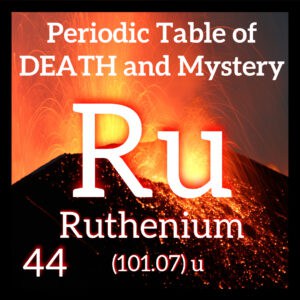Even though this article is only gold adjacent, we need to talk about gold. Not the kind you find in a pirate’s chest (cue Dead Men Tell No Tales) or the coin of my heart, the American St. Gaudens Double Eagle, 1907-1933 (my birthday is coming up …), but the kind that underpinned the world’s money for centuries. For the better part of American history, the U.S. dollar was as good as gold—literally.
You could, in theory, march into a bank with A Fistful of Dollars (Ennio Morricone, anyone?) and demand they hand over a handful of shiny yellow metal in exchange. This was the gold standard: the ultimate “backed by something real” promise (1).
But in 1971, President Richard M. Nixon looked at the world’s financial system, saw a looming gold run, and said, “Nope.” He slammed the Bretton Woods (2) gold window shut, ending the convertibility of dollars to gold and launching the world into The Wild, Wild West, 1965-1969 (3), of “floating” currencies and, let’s be brutally honest, runaway government debt. Since then (actually, about 2020), the U.S. has been printing money like it grows on a whole forest of trees, and our national debt has ballooned to numbers that make even mathematicians queasy.
Why does this matter for ruthenium, the actual focus element of this article? Because, dear reader, while we’ve been busy chasing gold above ground, it turns out that 99.99% of the planet’s gold—and most of its ruthenium—has been tucked away in the Earth’s core, far beyond the reach of Wall Street, Fort Knox, or even the most ambitious Spanish Galleon wreck salvager (4). The gold we trade, hoard, or OG with (I’m Gonna Get You, Sucka—1988) is just a seriously ridiculous cosmic rounding error compared to what’s hiding beneath our feet.
But sometimes the Earth gets cranky. Enter volcanoes, fiery portals to the underworld, and the preferred real estate of super-villains for their secret lairs. Recently, geologists discovered that when gold erupts from the depths, it’s often hand-in-hand with ruthenium—a rare, silvery metal that’s been quietly lurking in the shadows of the periodic table, waiting for its moment to shine. Sort of like a Margo Channing, Eve Harrington, All About Eve (6) (1950) scenario.
Why Ruthenium?
Ruthenium (atomic number 44, atomic weight 101.07) symbol Ru is the kind of element that would show up to a gold party wearing a silver tuxedo, holding a martini. It’s part of the platinum group metals, which means it’s rare, precious, and a bit of a show-off in the right company. But ruthenium’s real claim to fame is its stubborn refusal to stay put. When gold makes its epic journey from the Earth’s core to the surface—usually via a volcano spewing red-hot lava—ruthenium is often right there with it, tagging along for the ride.
Why? Because chemistry and the primordial chaos of planetary formation. Both gold and ruthenium are “siderophiles,” a fancy sciencey word for “iron-loving.” In fact, ruthenium sits right below iron in the periodic table. Billions of years ago, as the Earth was cooling and spinning, these elements were sucked down into the molten core, leaving the crust and mantle relatively impoverished. The gold and ruthenium we find near the surface today were either delivered by meteorites or burped up by the occasional super-volcano.
But here’s the kicker: when researchers analyzed recent Hawaiian volcanic eruptions, they found not just gold, but ruthenium-100—a ruthenium isotope (same atomic number, different weight) that acts like a fingerprint from the planet’s deep interior. This isotope is rare at the surface but more common in the core, so its presence tells us that these volcanoes are tapping into some seriously deep-Earth reservoirs.
Ruthenium-100: The core’s calling card
Why does ruthenium-100 matter? Because it’s a clue that the gold and ruthenium erupting from volcanoes isn’t just recycled crust but comes from much deeper layers of the planet. Ruthenium-100 is stable (no radioactive drama here), but its abundance and ratios can tell geochemists how much mixing has happened between the core, mantle, and crust over the eons. In short, it’s like geological ancestry.com, but with lava instead of DNA.
The chemistry is sweetly complex: Ruthenium’s ability to resist corrosion and form exotic compounds makes it a darling of both industrial chemists and planetary scientists. In the lab, ruthenium is used in electronics, solar cells, cancer drugs, and, if you’re feeling James Bond-ish, as a catalyst in the production of rocket fuels. In volcanoes, it’s a messenger from the underworld, hitching a ride with gold to remind us just how little we actually control the elemental treasures of our planet.
The Gold Standard, debt, and ruthenium
So, what does all this have to do with the gold standard and America’s mountain of debt? As it turns out, when the U.S. left the gold standard, we untethered our currency from the physical limitations of gold. Theoretically, if we could tap into the gold (and ruthenium) in the core, we’d have enough to back every dollar ever printed—and then some. But until we invent a drill that can survive 6,000 degrees Celsius and pressures that would crush a submarine, the gold and ruthenium in the core are just an enticing “what if,” because it’s found approximately 1,900 miles (3,000 kilometers) below the surface.
Meanwhile, the gold joined by ruthenium in volcanic eruptions serves as a reminder that the Earth is still making deposits, albeit on a geological timescale. Maybe, one day, the world’s monetary system will be backed not just by gold, but by a cocktail of rare elements, ruthenium included. Until then, we’re left with fiat currency, runaway debt, and the occasional volcanic surprise.
Death and Mystery: Volcanoes and human sacrifice
Shall we talk about the Death and Mystery part? Volcanoes have always been more than just geological curiosities—they’ve been sites of awe, terror, and, yes, human sacrifice. From the ancient Hawaiians tossing offerings into Kilauea to appease Pele, to the Inca sacrificing children atop Andean volcanoes, to the ancient Greek philosopher, Empedocles, who threw himself into the flames of Mt. Etna, humanity has long tried to bargain with the forces that carry destruction to the surface. Offer a life to the volcano, and maybe it will spare your village or bring you a win in battle or a good harvest. Today, we’re more likely to offer up data and grant proposals to the fickle “gods” of science, but the primal urge to appease the volcano—and the mysteries it holds—lingers.
The ruthenium takeaway
So next time you price a gold necklace or see ANOTHER ad on TV about adding gold to your retirement portfolio, spare a thought for ruthenium, the element that rides shotgun with gold from the core to the surface and whispers secrets about the planet’s deep past.
And if you’re ever tempted to toss a gold coin (or that guy who just stole the parking spot you’ve been waiting for at the mall) into a volcano, remember: the Earth’s core is already rich enough. So, let’s keep the sacrifices metaphorical—unless they’re absolutely necessary. 🙃



 Germanium, Bigfoot, and the Periodic Table of DEATH and Mystery
Germanium, Bigfoot, and the Periodic Table of DEATH and Mystery
Leave a Reply